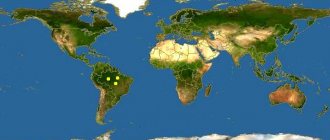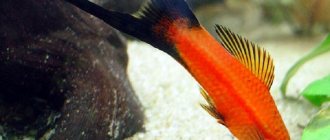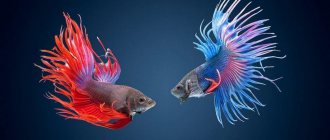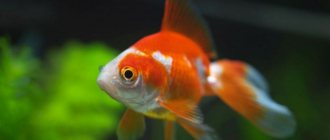Neons are aquarium fish up to 4 cm long, which have a shiny stripe running along their body. They come in different colors - black, blue or red.
These are very peaceful fish that live in schools at the bottom of the aquarium. They do not require special care and are interesting in their behavior. Charming Neons are the favorites of many aquarists.
Neon Diseases
Like many aquarium fish, this species is susceptible to disease. Compliance with certain conditions in caring for them will help avoid the occurrence of diseases.
Incorrect feeding regime, high illumination of the aquarium, problems with aeration and water filtration, very cold or, conversely, warm water - these factors contribute to the deterioration of the fish’s well-being.
In order to promptly and correctly identify an infection and take the necessary steps, you should know the symptoms of possible diseases.
Arrangement of the spawning area
Breeding neons in a community aquarium is not recommended, since eggs and fry require a special microclimate. It is better if the female spawns in a separate container. The spawning ground is set up while future producers are fattening.
Neon fish reproduce best in an aquarium about 40 cm long, but you can also take a glass jar. The main requirement for the container is that it should be convenient to disinfect and wash. First, the aquarium or jar is treated with a weak solution of potassium permanganate, then thoroughly washed with boiled water.
During spawning, the container should not be too light, so the walls are shaded in advance with a thin cloth or newsprint. It is optimal if dim light gets inside. The top of the container does not need to be covered with paper to make it convenient to observe the behavior and condition of the fish. But it is advisable to put a piece of glass, because neons are very active during spawning, and it is possible that the fish will jump out and die. There should be no soil at the bottom of the spawning area. Instead, put one of the following:
- Java moss;
- fern plants;
- twigs of cryptorina;
- bast;
- willow roots;
- tangled fishing line;
- nylon net.
There should be no other fish species in the spawning area. Snails and catfish are especially dangerous for eggs, as they can destroy all offspring in a short time.
Neon disease (Plistiphorosis): signs, causes, treatment and prevention
Neon disease is an infectious disease. Occurs when affected by spores that penetrate the tissues and cells of fish. It is very dangerous for other types of fish and destructive to Neons.
When infected, the body color fades and the neon stripe disappears. Pets lose their appetite, lose weight and split off from the school, their fins are destroyed and rush about at night. When swimming, they lose coordination of movements and make jerks.
Infection of healthy Neons occurs through ingestion of spores, which appear on everything - plants, soil, snails, shrimp, fish.
The causes of the disease can be different:
- the purchased fish were already sick and became carriers of the disease;
- overpopulation in the aquarium;
- overfeeding
All this can cause the appearance of poisons in the aquarium (nitrogen compounds - poisons NO2, NO3, NH3/NH4).
Unfortunately, there is no cure for this most dangerous disease. The equipment is completely disinfected, and the inhabitants of the aquarium are destroyed. Even seemingly healthy individuals, since they are spreaders of the fungus.
Theoretically, in mild cases or in the early stages of Neon disease, anticocidal drugs can be used:
- albendazole;
- toltrazuril;
- fumagellin;
- monensin sodium.
The use of drugs will only prolong the life of pets. There will be no final cure.
Prevention of this dangerous disease, like plistiphorosis, is to prevent the pathogen from entering the aquarium. You should buy fish only from trusted places, and after purchasing, keep them in quarantine for 4 weeks. And attach the decorations to only one aquarium.
How does the parasite affect the fish?
Once parasitic spores enter the body, they spread through their host. Once they reach the intestinal tract, the parasites lay eggs, which hatch after a few days of incubation, forming embryos that then burrow through the intestinal wall of the fish and produce cysts in the muscle tissue. As a result, muscle tissue cells die, which leads to loss of color.
Photo: neglected condition, a huge white spot and missing blue and red stripes
False Neon Disease: Signs, Causes, Treatment, Prevention
This disease acquired its name due to the similarity of its manifestations with genuine Neon disease (plistiphorosis). But the origin of these diseases is different. This means different methods of treatment.
False Neon disease is caused not by a fungus, but by a bacterium. Symptoms will be the fading of the neon stripe, the appearance of lightish-smoky spots on the body, a white coating, the individual loses weight and the belly is swollen.
The causes of the disease are unfavorable keeping of fish, their large crowding, long-term transportation, as well as ammonia or nitrite poisoning of fish.
This infection is not very contagious, develops slowly and is mild and completely curable. Only in abandoned cases do the fish die.
Treatment is carried out with antibiotics (kanamycin, biseptol, tetracycline, ciprofloxacin, levomycin) for 10 days. A day after replacing the water by one third, medications are added. Reduce the water temperature to 20° C so that the disease does not progress. After treatment, the aquarium is disinfected and the water is completely changed.
For prevention purposes, it is recommended to maintain optimal living conditions for the fish - change the water in a timely manner, do not overpopulate the aquarium, do not provide a large amount of organic food, and also keep the water temperature low.
Main characteristics of the species
Neons belong to the carp family. These are small, up to 4cm long. fish that are characterized by life in small groups, and for a comfortable existence it needs to stay in a flock of 7-10 individuals.
The colors of neons are dominated by red, black and blue tones, but their main external feature is, of course, considered to be a shiny blue stripe, which resembles a neon glow, and runs from head to tail through the entire body.
Neons are more bottom-dwelling fish and prefer to be closer to the ground part of the reservoir.
The lifespan of fish of this species in an aquarium is usually 3-4 years, provided that optimal conditions are observed.
Fungal diseases in Neons: signs, causes, treatment and prevention
Fungi begin to infect the external tissues of the fish in areas of scratches and damage. The fish’s body will have a whitish coating in the form of microspores, the appetite will disappear, and the fins and skin will erode.
The cause may be poor aquarium hygiene:
- cloudy water;
- waste of rotten food;
- fragments of plants that begin to rot;
- overpopulation;
- and many more.
All these reasons lead to the fact that the fungus destroys the upper tissues of Neons.
Bringing fish back to life is quite easy. Malachite green oxalate is diluted in a single reservoir and a sick individual is placed there. One hour is enough for the entire fungi to be killed.
At the very beginning of the disease, baths with a solution of 5% saline solution for 5 minutes will also be effective. Or long-term methylene blue baths. Maintain a water temperature increased for Neons +25-26° C. The common reservoir must be cleared of soil and plants, thoroughly rinsed and disinfected.
For preventive purposes you need:
- keep water fresh;
- soil freshness;
- Prevent aquarium plants and food from rotting in the aquarium.
Also, as a warning, you can do ultraviolet insolation of the water in the aquarium.
Pathogen
Sporozoan Plistophora hyphessobryconis. Diameter about 0.03 mm. In the development cycle there is a sporoblast stage. At this stage, the fungus can parasitize the muscles of the infected fish. In each of the sporoblasts, which are usually located in groups, a large number of myroscopic spores are formed. From the ripened spores of the fungus, amoeboid sprouts emerge, which, once in the intestines of the fish, again produce sporoblasts, and the disease invades new areas of the body. The embryos of the parasite can land on eggs.
Neon's tumor: signs, causes, treatment, prevention
There are benign and malignant neoplasms. Melanosarcoma is one of the most dangerous for Neons, malignant, leading to a tumor of pigment cells. The fish's torso becomes black, so it is easy to recognize. If the growth is small and has affected the internal organs of the fish, then it is possible to find out about it only by cutting the body.
Benign tumors cause little harm to the fish; they grow slowly and do not damage the tissue. But malignant ones arise in them and metastasize.
The causes of tumors are the chemical and physical parameters of the aquarium environment:
- viruses;
- genetic code;
- strong ionizing radiation.
All types of tumors are incurable, so there is no cure. It is better to kill a sick individual.
To prevent this disease, it is better to place the aquarium away from sources of ultraviolet and x-ray radiation. Avoid getting carcinogenic and toxic substances into the water.
Symptoms and pathogenesis
The muscles of the trunk are affected. From the muscle tissue and skin of sick fish, also along with urine, fungal spores enter the water, and then are swallowed with food by other fish and attach to their gastrointestinal tract. The sprouts that emerge from the spores penetrate the intestinal walls and, together with the blood, enter the muscles of the body. Lightening of the body of diseased fish is noted due to the formation of white spots in the muscles that are visible through the integument, and first grayish or glassy-white spots appear on the body and head, which gradually grow to cover the entire body. The fish's coordination of movements is impaired, it swims with its tail down, at an angle of 45 - 60 degrees, trying to jump out of this position, but they succeed only for 5 - 10 seconds. At night he does not sleep, but swims restlessly. The upper and caudal fins are compressed and disheveled. The fish trembles and ulcers may form on its body. General exhaustion sets in, and the abdomen may become sunken.
Neons often have an interrupted red stripe on their body. Separate colorless areas are formed, which soon connect and completely cover the red-colored areas of the body. Infected fish lose weight and their behavior changes.
Photo. Sick fish:
Content Basics
For a novice aquarist, it is important to understand who neon can get along with, what kind of maintenance features there are, etc.
This is a very peaceful fish, so it successfully coexists with all non-aggressive species of aquarium inhabitants. These are zebrafish, discus fish, tetras, pulcheras, platies, swordtails, etc. Accordingly, you should not keep them together with large individuals that can show aggression: large catfish, astronotus, goldfish, barbs.
These are schooling fish, so you need to immediately buy at least 6-8 individuals. If there are few of them, their color may fade, they will not be as active, which will lead to a reduction in their lifespan. By the way, many people are interested in the question: how long do neons live on average? It all depends on the temperature of the content:
- +18-22 degrees – about 4-5 years.
- +25 degrees – 3 years.
- +28 degrees – 1.5 years.
As you can see, the lifespan of fish is reduced in direct proportion to the increase in temperature in which they are kept. Therefore, it is recommended to use fairly cool water in the aquarium.
The recommended aquarium volume depends on the type of neon fish, but on average this figure is 30 liters or more. Fish are quite nimble, so they need room to swim.
Here are some general requirements for the maintenance and care of neons:
- The aquarium must be equipped with a sufficiently powerful filter. Aeration is equally important.
- To keep the water quality high, you need to change about a third of the total volume every week (the water should stand for 3 days). In addition, you need to siphon the soil.
- It is not necessary to cover the aquarium, despite the fact that these are quite active fish.
- Inside the aquarium there should be both thickets of plants and free areas where they can swim.
- From time to time you need to add tea or Tetra ToruMin conditioner to the water - they contain tannins that make the water darker, like in their natural habitat.
- At the bottom you need to place driftwood, pot shards and other shelters where small individuals can hide.
- They do not require lighting because they live in dark waters.
- You can reproduce their natural environment using dark soil. In addition, fish will look even more beautiful against a black background.
Habitat in nature and characteristics of reproduction
Neon fish in nature live in soft water, saturated with biological residues, which causes its acidity (pH = 5.5-8.0). In an aquarium, a shift in the water-alkaline balance in one direction or another can lead to the death of neons.
Against the background of silty dark soil, lush vegetation and flooded snags, tropical tree trunks and roots, the bright stripes on the neon bodies are even more noticeable. Fish live in schools in the middle and bottom layers of water.
Reproduction
For a long time, aquarists could not breed neons under artificial conditions. All spawned eggs turned out to be non-viable. Neons were supplied from habitats or Germany, where they learned to breed them. There was a simple explanation for the “German miracle”, about 25-30 years were spent studying it.
It turned out that the whole secret is in the water. Under natural conditions, soft, acidic water promotes the permeability of egg shells. In the aquarium, hard water made the egg membrane impermeable and the sperm themselves inactive.
Water with these characteristics was not available in Europe. Similar qualities were found only in some reservoirs in Germany and Sweden. In addition, the eggs died under direct rays of light. To recreate natural breeding conditions, aquarists had to study hydrochemistry, which, according to Mark Davidovich Makhlin, a biologist, raised aquarium farming to a whole new level.
The hatched fry have very poor vision and are inactive, so they can feed only in a cluster of tiny organisms - ciliates. The fry swim from darkness to light, just like their food - ciliates - does. Therefore, when breeding, the fry are placed in a sterile aquarium, screened with black paper with a narrow window for sunlight.
Feeding babies
Little neons eat often, but little by little, so you shouldn’t give them large portions at a time. In the first days they consume plankton, then their diet is gradually diversified. Suitable food for fish:
- rotifers;
- zooplankton;
- ciliates;
- hard-boiled and mashed egg yolk;
- cyclops;
- nauplii.
The darkening from the spawning area is removed when the fish are 2 weeks old. After another 7 days, the neon chips acquire a characteristic shine. By the age of one month, the fish should get used to normal lighting, and at 1.5 months they are transferred to water with normal hardness. At this time, it is already possible to plant neon babies in the aquarium, having previously accustomed them to new food.
What it is
Neon disease, or pleistophorosis (plistophorosis) is a disease caused by protozoa related to fungi - the microsporidia Pleistophora hyphessobryconis. It received its Russian name due to the species of fish most affected by it - blue neon, and its Latin name - due to the prevalence among fish of the genus Hyphessobrycon (lat. Hyphessobrycon).
Some characins suffer from pleistophorosis:
There are no documented cases of pleistophorosis in red neons, and other diseases can often cause similar symptoms.
In addition to characins, neon disease occurs in fish of other families:
Red neon, not susceptible to disease.
History of discovery
In nature, neon fish live in South America, in the river basins of Peru, Colombia and Brazil. They prefer slowly flowing waters of tributaries of large rivers, lakes and streams. The water in them is saturated with the decaying remains of tropical plants and is shaded by overhanging tree branches, so bright colors are simply necessary in the dark waters of tropical rivers.
These bright unusual fish were first introduced to the world by the Frenchman Auguste Rabot. This adventurer searched for gold in the wilds of the Amazon, along the way catching exotic butterflies and collecting orchids for collectors from Europe. In the tropics, he contracted a fever and died if he had not ended up with a tribe of aborigines who raised him. Rabo was interested in a bright fish, similar to a neon advertisement, which sparkled in a vessel of water in a darkish hut.
After recovery, the Frenchman organized the capture of unusual fish and transportation to the Old World and the USA. The fish survived transportation quite well in ordinary wooden boxes coated with resin. O. Rabo sent part of the catch to Germany, and part to Philadelphia to the famous tropical fish researcher William Innes. The traveler believed that this would give him the necessary advertising, since Innes was the publisher of the popular Aquarium magazine.
Innes sent the fish to one of the most famous ichthyologists, Professor G.S. Myers. Thanks to his research and publications, the world learned about neons called Hyphessobrycon innesi. Later, neon fish were assigned to the characin family, an order of carp-like fish under the name Paracheirodon.
Poisoning
It can be caused by low-quality feed, chlorine, metals or other chemical products getting into the water. Symptoms of neon poisoning:
- the body and gills become covered with mucus;
— increased activity is observed: the fish rushes about and tries to jump out of the aquarium;
— in the last stages there is a significant decline in activity.
Poisoning most often affects all the fish in the aquarium at the same time. At the same time, it is possible to determine that the cause of death was poisoning only based on the facts. For example, if the fish died after changing water, which met all standards of hardness, acidity and temperature.
Calf throwing
The female and male are dropped into the spawning area in the evening, and after that they are not given food. You can use either one male or two. In the second case, the eggs will be fertilized by a stronger neon male. Spawning begins in the morning and ends after about 4 hours. During spawning, the female moves chaotically and lays eggs, with the total number of eggs reaching 100–300. The male follows her and performs fertilization. The eggs descend and attach to algae or pebbles.
Immediately after the end of spawning, the fish should be placed in a common aquarium. If this is not done, they will eat the eggs. For the same reason, breeding in a community aquarium is not recommended: parents can destroy their offspring. After spawning, the water should be disinfected so that bacteria do not multiply in it and fungus does not develop.
For this purpose, add one of the drugs:
- General Tonic;
- "Tripaflavin";
- "Methylene blue."
After disinfection, the container is covered with a cloth or other opaque material and placed in a dark place. If you don't do this. the eggs will die because they cannot tolerate light.
To breed fish, it is necessary to create special conditions: use all-glass jars that are easy to wash and disinfect.
Stress
Neons are rather shy fish and are very susceptible to stress. They need to be kept in flocks, otherwise they feel uncomfortable. A sudden change in living conditions, a long move, or introducing large active fish into an aquarium can cause stress. Because of this, the neon's appetite worsens, the fish constantly rush around, looking for somewhere to hide or do not come out of their hiding places. To correct the situation, the cause of the disturbance must be identified and eliminated. It is worth remembering that improper living conditions and constant stress lead to neon diseases.
Main features of aquarium neons
A distinctive feature of neon fish is the presence of a shiny stripe along the body, which shimmers very interestingly when light is reflected. Actually, the very name of this fish appeared because of this feature - the stripe on the body glows as brightly as the lights of a neon advertisement on some billboard.
Natural habitat - South America. These fish are found in the rivers of Peru, Brazil and Colombia. They usually lead a bottom-dwelling lifestyle. The belly of the fish is lowered down relative to the tail, the shape of the body is spindle-shaped. The fins are of a classic shape, the color closer to the tail is bright red.
The size of an individual rarely exceeds 4-5 cm. A female can be distinguished from a male by several characteristics. The first is that males have a straight back, while females have a curved back. The second sign is a neon stripe, which in females has a slight bend in the middle, while in males it remains straight. In addition, males are slightly smaller in size - 7-10 mm.











